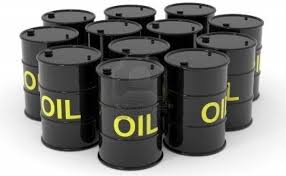 The Opec and IEA reports this week pretty much buried any remaining hopes of substantial market rebalancing this year.
The Opec and IEA reports this week pretty much buried any remaining hopes of substantial market rebalancing this year.
Opec knocked some 200,000 b/d off the forecast fall in 2016 non-Opec production shrinkage. And ominously, it now sees non-Opec production rising next year compared with 2016, albeit by just 200,000 b/d. That’s despite two producers — Gabon and Indonesia — migrating from the non-Opec to the Opec camp. For all the pain of lower prices and prioritisation of market share, forecast non-Opec supply in 2017 is seen at just 400,000 b/d down on 2015.
The IEA expects non-Opec growth of 380,000 b/d in 2017, after contraction of 840,000 b/d this year. Contraction of around 1.4mn b/d in non-Opec production between the end of 2014 and now has been overwhelmed by surging Mideast Gulf output. Saudi Arabia, Kuwait and the UAE have all broken production records, it says.
Its verdict on the market is that “this supply-demand dynamic may not change significantly in the coming months. As a result, supply will continue to outpace demand at least through the first half of next year. Global inventories will continue to grow: OECD stockpiles in July smashed through the 3.1bn bl wall. As for the market’s return to balance — it looks like we may have to wait a while longer.”
If there is a glimmer of hope for producer countries with large populations to feed and appease, it is that forecasts of increases in production are often tenuous, and some of those in current market projections particularly so. The IEA built a restart (to all intents and purposes a start-up) of Kazakhstan’s Kashagan field into its August Oil Market Report. Opec’s Monthly Oil Market Report took account of it this month, but was remarkably credulous in doing so. It accepts pronouncements that the field will come on stream next month, that it will ramp up at a faster rate than previously expected, and that it will hit 230,000 b/d by the end of this year, and a plateau of 370,000 b/d ahead of schedule next year. This is a field that was originally due to begin production around 2005 and cost $10bn, but which has cost $50bn so far and was shut down days after its October 2013 start-up for massive pipeline replacement work. And the announcement of an early and faster restart was driven by a pronouncement by a prime minister who is no longer in post. Even President Nursultan Nazarbayev was circumspect, saying an October start-up was “probable”.
Outlooks for Norwegian production have been lifted, after an unexpected jump to a six-year high in July. But at the same time, state-owned holding company Petoro warned that future oil and natural gas output is under threat, because only a small proportion of the cost savings made in the lower oil price environment is likely to be sustainable.
Yemen may resume exports — then again, would you bet your shirt on it?
Canadian heavy crude continues to come back after the wildfires earlier this year — but then it was always going to and the fires themselves were unforeseen, which illustrates the point.
How about a sweepstake on next month’s Nigerian output?
Colombia is at peace now, for now.
Kirkuk crude flows to Ceyhan: wire reports said they were disrupted yesterday, shipping agents said they were not. Monthly downtime this year has varied from a few hours a month to weeks on end. And volumes have also varied according to whether North Oil was or was not putting crude into the system. And did Islamist rebel attacks on fields crimp output? Has the KRG persuaded the PKK not to bomb the pipeline?
US shale production may come back fast and furious. But it may not. The price sensitivities and the funding models for this ‘new’ oil are still not understood.
All of which is just to point out that forecasts of output growth and decline from many producing areas, are little more than reading from a finger in the wind, accompanied by a string of caveats. A week ago, Libya was looking forward (funds permitting) to increasing output by 900,000 b/d by the end of this year. Three days ago, fighting around four oil terminals looked to have scorched those hopes. Now, an accord of sorts is on the cards and state-owned NOC’s chairman said production could rise to 600,000 b/d within four weeks from 290,000 b/d now, and then to 950,000 b/d by the end of this year, and force majeure has been lifted on ports.
Whether it suits them, singly or collectively, to admit it, the reality is that a handful of major Mideast Gulf producers with well-entrenched governing structures, large reserves and low production costs can pretty much guarantee how much they will put on the market, whatever the price. It is their production boost that has counteracted the fall in non-Opec supply, and only a decision by them to meet, rather than exceed, the call on Opec can bring a high degree of predictability to the supply side of the supply-demand imbalance.
Source: Argus (http://blog.argusmedia.com/dont-bet-your-shirt-in-the-output-sweepstake/), 15.09.2016




